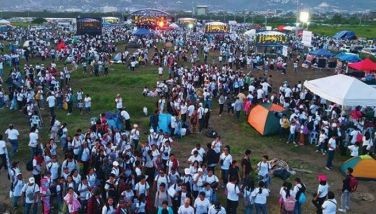Decoys, dummies and click bait

If you’ve ever gone hunting or been in a game with an opposing team, chances are you’ve heard about decoys or maybe even used decoys to mislead or distract your target.
If you’re into cars, chances are you know that a “crash test dummy” is a mechanical version of a human being used to measure the degree of potential injury in a crash without hurting an actual human being.
In companies, a “dummy” is a replacement or sit-in for someone who cannot legally own or occupy a position of ownership or doesn’t want to be directly responsible for any legal or financial fallout.
In this modern world, the term “click bait” is defined as “content whose main purpose is to attract attention and encourage visitors (online) to click on a link to a particular web page. It is also used to artificially multiply visits or views of a page or post.”
One interesting story I heard in a seminar shared by a young college professor was about how formerly popular K-pop groups who have run out of steam in South Korea would do refresher tours and fan visits in Metro Manila to increase their followers, or use the events as “click bait” to revive their languishing careers.
This week, I learned how certain groups are utilizing print and social media to create or develop a scenario by putting a spin on an “old story,” using the media as decoys to attract the attention of airline passengers and airport guests to future rate increases at the NAIA complex and make them mad and rise up in arms.
The goal is to block or stop future rate increases not for passengers, but fees and charges for operators and corporate players doing business at the NAIA complex way before the actual implementation. In other words, they used the “little fish” as bait so the Big Fish don’t have to pay their share for use of the facilities.
While the little fish fell for the trap or got set up, other interest groups jumped in to get mileage and media exposure by making alarmist comments and assumptions, either for political reasons or position themselves as champions worthy of funding, either local or foreign.
As a background, it seems that certain groups actively fed information to members of the media that once the SMC-NNIC takes over the NAIA complex, the new group will be implementing new and higher prices. The resulting articles correctly published the rates and fees that will be raised or adjusted as far as passengers are concerned.
What was unclear was when the fees would be imposed, how the fees were determined and the reason for such fees and rate increases at the NAIA complex.
The problem was some versions leapfrogged from hundreds of pesos to billions of pesos without making the distinction between passenger terminal fees versus airport and aviation fees and charges, not to mention that the billions of pesos would be collected over several years.
A number of air travelers and foreigners found the articles alarming and confusing at the same time because the articles created the impression that the charges would be levied almost immediately after the scheduled turnover this Saturday. Other individuals criticized the misleading summaries and as one foreigner put it, “The math did not add up” and the summaries lacked “critical reading or critical understanding.”
That, of course, would be impossible given that none of the history and details on the rates and fees were included or mentioned online. For instance, that the rates were already set by the DOTr long before the competitive biddings took place, that all the bidders, most of whom are airline operators or were in aviation (except San Miguel Corporation), knew about the new rates and charges required by government.
The reason behind the rates and charges is because the government will be earning the larger share of revenues (81.2 percent) from all operations of the NAIA complex which will either be returned to the government after 15 years, renegotiated or bid out once more.
* * *
The following is a copy of the NNIC statement on the matter:
NNIC addresses concerns on NAIA rate adjustments
The New NAIA Infrastructure Corp. (NNIC), the private consortium awarded the NAIA Public-Private Partnership (PPP) project, recognizes concerns from some groups regarding adjustments to the fees and charges at the airport, particularly their potential impact on ordinary Filipinos.
NNIC reiterates that these fee adjustments were determined by the government together with the Asian Development Bank (ADB) prior to the bidding process.
They were carefully benchmarked against international standards to ensure that NAIA’s rates align with the actual costs of operating a world-class airport capable of delivering an enhanced travel experience for all.
These adjustments were set to take effect regardless of which consortium won the bid. Also, they have been designed to ensure that travelers are not unfairly impacted.
Given this, changes to passenger service fees will take effect starting in September 2025. Overseas Filipino workers (OFWs) will continue to be exempt from the international departure fee.
NNIC assures all travelers that these are all part of a broader initiative to improve the overall airport experience.
For over two decades, NAIA’s fees have remained unchanged, limiting the airport’s ability to maintain modern infrastructure and meet international standards. This has led to outdated facilities and a less-than-ideal passenger experience.
NNIC’s successful bid, which commits to providing 82.1 percent of NAIA’s total revenues to the government, reflects the consortium’s commitment to ensuring this partnership benefits the public and serves the best interests of all travelers.
Moving forward, NNIC commits to working closely with all stakeholders to help manage concerns during the transition.
* * *
E-mail: [email protected]
- Latest
- Trending

























